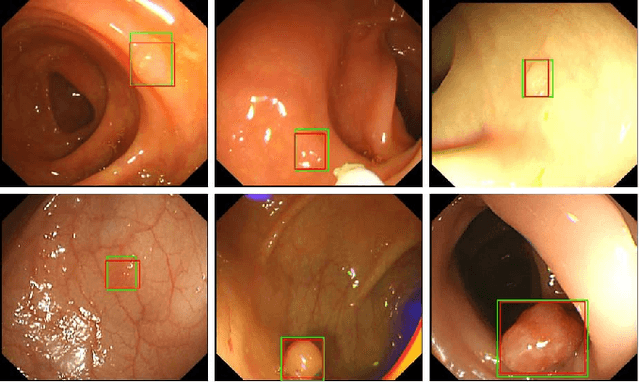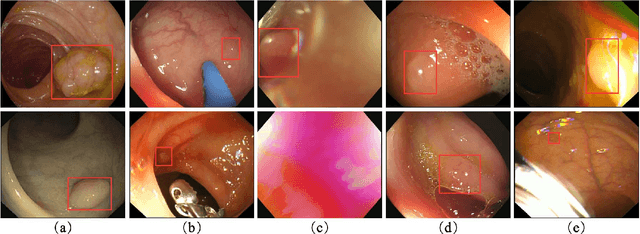Zinan Xiong
Adaptify: A Refined Adaptation Scheme for Frame Classification in Atrophic Gastritis Videos
Aug 17, 2024Abstract:Atrophic gastritis is a significant risk factor for developing gastric cancer. The incorporation of machine learning algorithms can efficiently elevate the possibility of accurately detecting atrophic gastritis. Nevertheless, when the trained model is applied in real-life circumstances, its output is often not consistently reliable. In this paper, we propose Adaptify, an adaptation scheme in which the model assimilates knowledge from its own classification decisions. Our proposed approach includes keeping the primary model constant, while simultaneously running and updating the auxiliary model. By integrating the knowledge gleaned by the auxiliary model into the primary model and merging their outputs, we have observed a notable improvement in output stability and consistency compared to relying solely on either the main model or the auxiliary model.
Swin-Pose: Swin Transformer Based Human Pose Estimation
Jan 19, 2022



Abstract:Convolutional neural networks (CNNs) have been widely utilized in many computer vision tasks. However, CNNs have a fixed reception field and lack the ability of long-range perception, which is crucial to human pose estimation. Due to its capability to capture long-range dependencies between pixels, transformer architecture has been adopted to computer vision applications recently and is proven to be a highly effective architecture. We are interested in exploring its capability in human pose estimation, and thus propose a novel model based on transformer architecture, enhanced with a feature pyramid fusion structure. More specifically, we use pre-trained Swin Transformer as our backbone and extract features from input images, we leverage a feature pyramid structure to extract feature maps from different stages. By fusing the features together, our model predicts the keypoint heatmap. The experiment results of our study have demonstrated that the proposed transformer-based model can achieve better performance compared to the state-of-the-art CNN-based models.
Colorectal Polyp Detection in Real-world Scenario: Design and Experiment Study
Jan 11, 2021



Abstract:Colorectal polyps are abnormal tissues growing on the intima of the colon or rectum with a high risk of developing into colorectal cancer, the third leading cause of cancer death worldwide. Early detection and removal of colon polyps via colonoscopy have proved to be an effective approach to prevent colorectal cancer. Recently, various CNN-based computer-aided systems have been developed to help physicians detect polyps. However, these systems do not perform well in real-world colonoscopy operations due to the significant difference between images in a real colonoscopy and those in the public datasets. Unlike the well-chosen clear images with obvious polyps in the public datasets, images from a colonoscopy are often blurry and contain various artifacts such as fluid, debris, bubbles, reflection, specularity, contrast, saturation, and medical instruments, with a wide variety of polyps of different sizes, shapes, and textures. All these factors pose a significant challenge to effective polyp detection in a colonoscopy. To this end, we collect a private dataset that contains 7,313 images from 224 complete colonoscopy procedures. This dataset represents realistic operation scenarios and thus can be used to better train the models and evaluate a system's performance in practice. We propose an integrated system architecture to address the unique challenges for polyp detection. Extensive experiments results show that our system can effectively detect polyps in a colonoscopy with excellent performance in real time.
 Add to Chrome
Add to Chrome Add to Firefox
Add to Firefox Add to Edge
Add to Edge